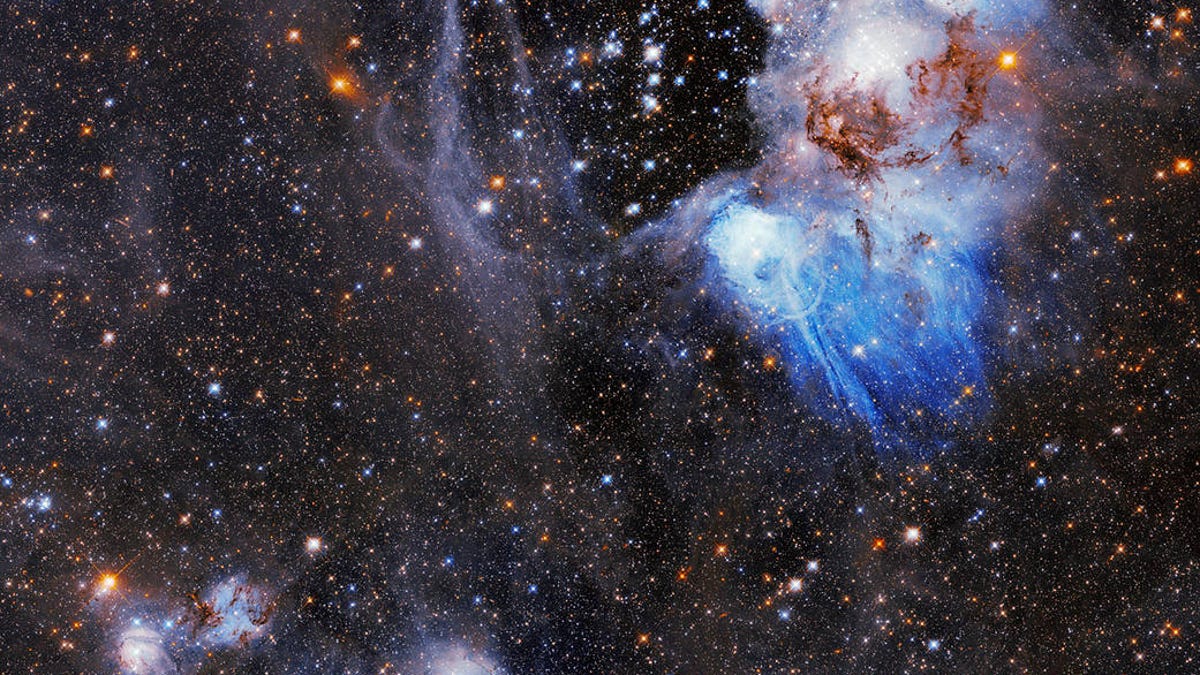Haunting Hubble image shows mysterious 'superbubble' nebula hole
A dark and starry gap may be connected to supernova activity.
Nebulas are some of the most stunning features we see in space. N44, one of these ghostly formations of gas and dust, is a particularly strange nebula. It sports a "superbubble," a large, dark gap that makes it look like it has a chunk scooped out of it.
A new Hubble Space Telescope image highlights the oddness of N44, which is located 170,000 light-years from Earth and stretches about 1,000 light-years across. "The hole is about 250 light-years wide and its presence is still something of a mystery," NASA said in a statement on Tuesday.
Scientists have come up with some possible explanations. Stellar winds from stars inside the bubble could possibly have pushed the gas out of the way, but the data on those winds doesn't seem to support that idea.
"Another possibility, since the nebula is filled with massive stars that would expire in titanic explosions, is that the expanding shells of old supernovae sculpted the cosmic cavern," NASA said.
A supernova is an impressive explosion that happens when a dying star goes kicking and screaming into that good night. There's at least one supernova remnant near the superbubble.
Hubble is a joint project of NASA and the European Space Agency. The venerable telescope has been staring out into the cosmos for over 30 years and is currently experiencing a technical glitch that has put a pause on its science observations.
NASA and ESA hope to get the telescope back up and running so it can continue to deliver knockout images and data from space marvels like N44.


